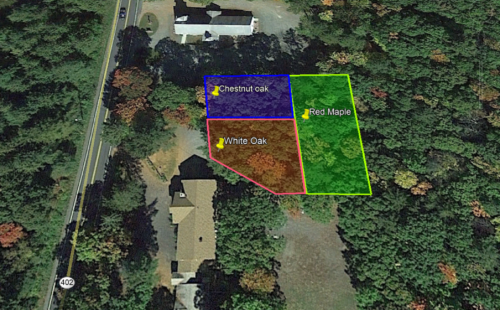News

Managing a Small Woodlot

By Jeremy Oettinger, Resource Conservationist.
When you think of forest management, many people may think of the importance of large forests. It is important to consider that while some property owners have smaller woodlots, these small tracts of forested land also have great value. Let’s discuss some management strategies for smaller woodlots.
The first step would be to inventory your woodlot to determine what tree species are on your property. On a smaller woodlot this is much easier to do. Consider drawing a map of your property breaking up the area by the dominant tree species in the stand. This can also be accomplished in Google Earth. Take note of the health of your trees in the inventory. Make sure to include an assessment of the age, presence of disease (such as emerald ash borer infestation or hemlock woolly adelgid), and crown health. All of these factors can impact which trees you may want to keep or remove.

Here is an example of a simple map made in Google Earth of a portion of the District property, showing the approximate boundaries of three stands. The predominant mature species that comprised the crowns of these stands were white oak, chestnut oak, and red maple. The understory was comprised of young white pines
With an inventory of what you have in your woodlot, establish what you may want to achieve with your trees. Are you looking to foster wildlife habitat? If so you may want to keep brush piles, snags, and a variety of species on your woodlot. Do you want to harvest trees for firewood or for their products, such as maple syrup? If so you don’t want to remove all of your best trees because they produce the best seed stock. Do you want to create walking paths? There are many considerations to make, and your desires of what to accomplish combined with the variety of species in your stand will help drive these decisions.
If your forest connects with an adjacent property, consider collaborating with your neighbors to accomplish your goals. Communicating with your neighbors about your goals, and understanding theirs is also important. Find out early if you can cooperate or need to be extra careful to avoid conflict with your forestry goals. Clearly marking your property boundaries is important for this reason.
Regardless of your goals, make sure to create a plan and stay safe in your forest.
